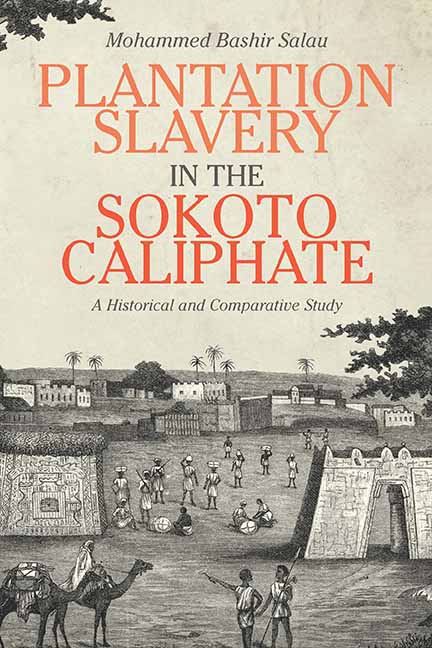Book contents
- Frontmatter
- Contents
- List of Illustrations
- Acknowledgments
- Introduction
- 1 Race and Slavery in the Sokoto Caliphate
- 2 The Roots of Sokoto Caliphate Plantations
- 3 The Course of Plantation Development
- 4 The Types, Structures, and Characteristics of Plantations
- 5 Observations on Slave Origins, Slave Resistance, and Labor Control
- 6 The Significance of Plantations
- 7 Plantations in the New World and in Coastal East Africa Compared
- Conclusion
- Notes
- Bibliography
- Index
4 - The Types, Structures, and Characteristics of Plantations
Published online by Cambridge University Press: 23 July 2019
- Frontmatter
- Contents
- List of Illustrations
- Acknowledgments
- Introduction
- 1 Race and Slavery in the Sokoto Caliphate
- 2 The Roots of Sokoto Caliphate Plantations
- 3 The Course of Plantation Development
- 4 The Types, Structures, and Characteristics of Plantations
- 5 Observations on Slave Origins, Slave Resistance, and Labor Control
- 6 The Significance of Plantations
- 7 Plantations in the New World and in Coastal East Africa Compared
- Conclusion
- Notes
- Bibliography
- Index
Summary
Given that the jihad leaders emphasized Islam in their struggle against the Habe rulers and others, it is unsurprising that the application of sharia law became an important part of the sultans’ and emirs’ rule in the Sokoto caliphate; these leaders believed that at least every Muslim should be subject to the prescriptions of this law. Accordingly, they maintained many sharia courts and prohibited alcohol, prostitution, and the like. Turning to an examination of ownership and the organization of plantations, however, we see that the attitude of the sultans and emirs toward the implementation of the sharia was sometimes adaptive and non-legalistic. Although the main sources of sharia law (or the Quran, Hadith, and Sunna) do not sanction the use of slaves in large agricultural estates, rulers allowed estates of varying sizes to be attached to political offices, while at the same time allowing out-ofpower aristocrats and rich non-aristocrats to maintain private estates. There was nothing abnormal about this pattern, or in a broader sense there was nothing abnormal about Islamic rulers embracing practices or institutions not sanctioned by sharia. Indeed, most Islamic rulers since Muhammad, to varying degrees, have tended to adapt practices and institutions not sanctioned by Islamic law to Islamic use.
The establishment and maintenance of official estates was associated with an orderly pyramidal organization which linked rural administration and urban administration, albeit fostering such linkages via plantations, as through the related “Mamluk” system, was not sanctioned by Islam. Although slaves often worked on the main fields in gangs and under overseers, each estate attached to a political office was ultimately managed by the relevant political office holder who directly appropriated the surplus labor of the slaves. Private estates were similarly organized. At the same time that estate owners encouraged the punishment of recalcitrant slaves and appropriated the surplus labor of slaves, they never lost contact with the sharia, and they never failed to take into consideration the caliphate's environmental realities as well as the slaves’ humanity. They also implemented other management strategies, such as granting garden plots to slaves, which not only served to foster the notion that they were treating their slaves fairly or in accordance to the stipulations of the sharia, but that also fostered status gradation among slaves.
- Type
- Chapter
- Information
- Plantation Slavery in the Sokoto CaliphateA Historical and Comparative Study, pp. 74 - 89Publisher: Boydell & BrewerPrint publication year: 2018



